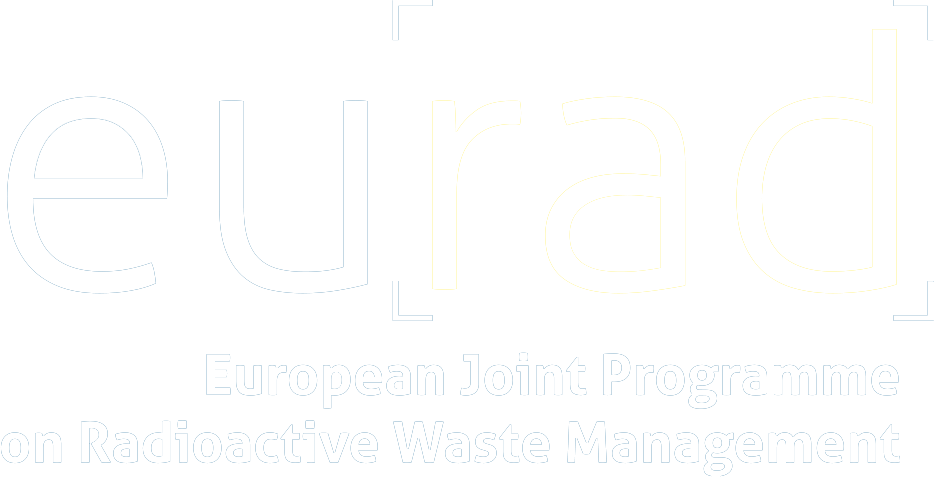Start: September/October 2021
Context of the subject:
The thesis is part of the chair “STORAGE AND DISPOSAL OF RADIOACTIVE WASTE”, a chair in partnership with Andra, EDF, Orano and IMT Atlantique. By pooling their expertise, the members of the chair aim to carry out a scientific programme based on a concerted vision to develop a sustainable radioactive waste conditioning and disposal system.
Cigéo is the French project to establish an industrial facility for the disposal of high-level and medium-level long-lived radioactive waste in deep geological clay formations. Within the Cigéo facilities, it is planned to dispose the radioactive waste in locations, excavated in the Callovo-Oxfordian clay formation, lined by cementitious materials. The proposed thesis topic focuses more specifically on the fate of plutonium and uranium within a disposal cell following their release over time from certain types of long-lived medium level radioactive wastes. The aim is to provide new scientific insight in the phenomenology constraining potentially existing reconcentration phenomena of fissile material within the repository allowing demonstrations of criticality safety after the closure of the repository.
Scientific programme of the thesis topic:
The work envisaged during this thesis aims to provide new knowledge on the behaviour of plutonium and uranium in the hydrogeochemical conditions of a HLW repository. The aim is to study the solid/solution reactivity phenomena (precipitation, co-precipitation, dissolution, retention, etc.) in a complex geochemical environment characterised by the absence of any trace of oxygen, the presence of hydrogen and a hyperalkaline pH that changes over time.
This experimental thesis in radiochemistry will be carried out at the joint research unit, SUBATECH (IMT-Atlantique, CNRS-IN2P3, University of Nantes) in Nantes, France. The concentrations of Plutonium that can be handled in the laboratory will limit us to measurements and quantifications in aqueous solution. The laboratory has experimental equipment and analytical instruments (glove boxes, IC, ICP-MS, gamma spectrometer, liquid scintillation counting) allowing to work safely in inactive and radioactive environments.
The scientific questions will concern:
- The phenomena of U precipitation and U/Pu co-precipitation in a cementitious environment (hyperalkaline pH 12.5 to 13.5) influenced by clay pore water in the presence of hydrogen (resulting from the anoxic corrosion of steel),
- either without a redox front in a medium dominated by U(IV)
- or with a redox front following the reduction of an addition of U(VI) and the formation of U(IV) precipitates
- The formation of colloidal compounds of Pu and U and their physico-chemical characteristics,
- Dissolution/precipitation phenomena of solid phases of U/Pu under varying hydric and redox conditions;
The scientific challenges to be addressed during this thesis are the following:
- The expected formation of heterogeneous precipitates, small in size (less than ten nanometres) and evolving during the experiment, leading to the experimental challenges detailed below:
- Depending on the conditions of addition of the reagents, the U/Pu ratio in the precipitated particles can be variable. The size of the particles will influence their solubility in water via the surface energy effect. Determination of particle size and/or specific surface area and/or surface tension is an important issue.
- The presence of colloids and nanoparticles will require unambiguous separation of the solid/liquid phases by ultrafiltration in hyperalkaline media.
- Traces of oxygen in the precipitates can strongly increase their solubility. It will then be necessary to measure the U/O or (U,Pu)/O ratio, with sufficient sensitivity to discern between UO00 and UO2.05.
- The water/solid system will evolve over time resulting in the slow growth of solid phases and the reduction of the associated aqueous concentration.
- The expected solute concentrations in water are between 10-8 and 10-11 M in U and Pu respectively. The choice of analytical method (ICP-MS/HR or radiometric) also depends on the Pu isotope chosen
- It is necessary to work under inert gas in an atmosphere rich in H2 to maintain a very low redox potential. The experiments will be carried out in a glove box under inert gas/H2(g) in a controlled area without any trace of oxygen.
- The results of the experiments will be modelled using thermodynamic and geochemical approaches.
Candidate profile
We are looking for a candidate who considers these experimental difficulties as a challenge. He/she will have a background in radiochemistry, geochemistry, analytical chemistry, environmental chemistry or materials chemistry. The supervision of the thesis will be carried out by Professor Bernd Grambow of ITM Atlantique in Nantes.
Candidates must be under 26 years of age on 1 October 2021. The thesis will be registered in the doctoral school 3M in Nantes.
Please send your questions or applications to
- B. Grambow, +33 687660306, grambow@subatech.in2p3.fr
- T. Suzuki, +33 672102339, suzuki@subatech.in2p3.fr


